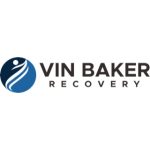DHS Encourages Wisconsinites to Take Action to Prevent Childhood Lead Poisoning
October 20-26 marks National Lead Poisoning Prevention Week
During National Lead Poisoning Prevention Week (October 20-26), the Wisconsin Department of Health Services (DHS) is encouraging all Wisconsinites take steps to prevent and detect childhood lead exposure by getting the facts, helping children get tested for lead exposure, and checking homes for lead hazards.
Earlier this year, DHS issued updated lead testing recommendations, calling for all children to be tested for exposure to lead at ages 1 and 2. Children between 3 and 5 years old who have not been previously tested should also undergo screening for lead poisoning. Wisconsin communities with high rates of lead exposure due to the age of housing or other lead hazards may have additional testing recommendations.
Testing has started to increase following historic lows during the pandemic, but there may be many more children with lead poisoning who have not been identified. In 2023, only 40% of 1- and 2-year-olds in Wisconsin received a blood lead test. Over the past decade, nearly 27,000 Wisconsin children under the age of 6 have been poisoned by lead.
“Children younger than 6 are particularly vulnerable to lead exposure because their bodies are still developing and growing rapidly,” said Brian Weaver, DHS Lead Policy Advisor. “No amount of lead exposure is safe for a child. Even low levels of lead in blood have been shown to affect a child’s IQ, ability to pay attention, and speech development. It is important for everyone to understand the risks of lead exposure and actions they can take to help but an end to childhood lead poisoning in Wisconsin.”
Any child can be lead poisoned, but not all children are at the same risk. Children who live in households at or below the federal poverty level and those who live in housing built before 1978 are at the greatest risk of lead exposure.
DHS encourages parents and caregivers to take action:
- Get the facts: Lead is still a problem in many communities. Learn about lead exposure, lead hazards, and how to protect families and communities on the Lead-Safe Wisconsin webpage.
- Get children tested: A blood test is the only way to find out if a child has lead poisoning. DHS recommends that children receive a blood lead test at age 1 and age 2, and between ages 3 and 5 if they have not been previously tested.
- Get homes tested: Minimize the risk of lead exposure by hiring a certified professional to test homes built before 1978. Contact the local health department or water utility company to find out about testing water. Renters should ask landlords to have homes or apartments tested.
Find information about protecting families and communities from lead exposure and lead-safe homes on the Lead-Safe Wisconsin webpage. Learn about resources available to fix lead hazards on the Find Funding Opportunities to Fix Lead Hazards webpage.
NOTE: This press release was submitted to Urban Milwaukee and was not written by an Urban Milwaukee writer. While it is believed to be reliable, Urban Milwaukee does not guarantee its accuracy or completeness.
More about the Lead Crisis
- $43 Million Later, MPS Says Classrooms Are Safe From Lead Dust - Corrinne Hess - Dec 18th, 2025
- MPS Buildings Cleared of Lead-Paint Risks after 10-Plus Months of Work - Milwaukee Public Schools - Dec 17th, 2025
- Wisconsin Moves to Require Lead Service Lines Replaced By 2037 - Danielle Kaeding - Dec 11th, 2025
- Gov. Evers, DNR Announce More Than $159 Million to Ensure Clean, Safe Drinking Water for Wisconsinites in 29 Municipalities - Gov. Tony Evers - Dec 10th, 2025
- EPA Announces $3 Billion in New Funding for States to Reduce Lead in Drinking Water - U.S. Environmental Protection Agency - Nov 25th, 2025
- Wisconsin Communities Get $282 Million for Drinking Water Projects - Danielle Kaeding - Nov 19th, 2025
- MKE County: County Launches Lead Abatement Program - Graham Kilmer - Nov 9th, 2025
- Milwaukee County Launches Lead Remediation Program to Reduce Lead-Based Paint Hazards in Homes in Suburban Communities - David Crowley - Nov 5th, 2025
- Wisconsin Improves Child Lead Testing Rates, Urges Continued Testing and At-Home Prevention - Wisconsin Department of Health Services - Oct 21st, 2025
- City Hall: Milwaukee Must Replace 100 Lead Laterals Per Week To Meet 2025 Goal - Jeramey Jannene - Oct 1st, 2025
Read more about Lead Crisis here
Mentioned in This Press Release
Recent Press Releases by Wisconsin Department of Health Services
DHS Confirms First Pediatric Respiratory Illness-Associated Deaths
Dec 18th, 2025 by Wisconsin Department of Health ServicesEncourages everyone 6 months and older to get vaccinated against respiratory viruses to protect against serious illness and spread of disease
DHS Continues to Recommend Hepatitis B Vaccine Dose within 24 Hours of Birth
Dec 11th, 2025 by Wisconsin Department of Health ServicesHealth officials reviewed safety and effectiveness of hepatitis B vaccine, issuing guidance to parents, clinicians
DHS Tracking Respiratory Illness Activity Ahead of the Holiday Season
Nov 24th, 2025 by Wisconsin Department of Health ServicesWisconsinites urged to get vaccines now to be protected for the holidays and beyond






















